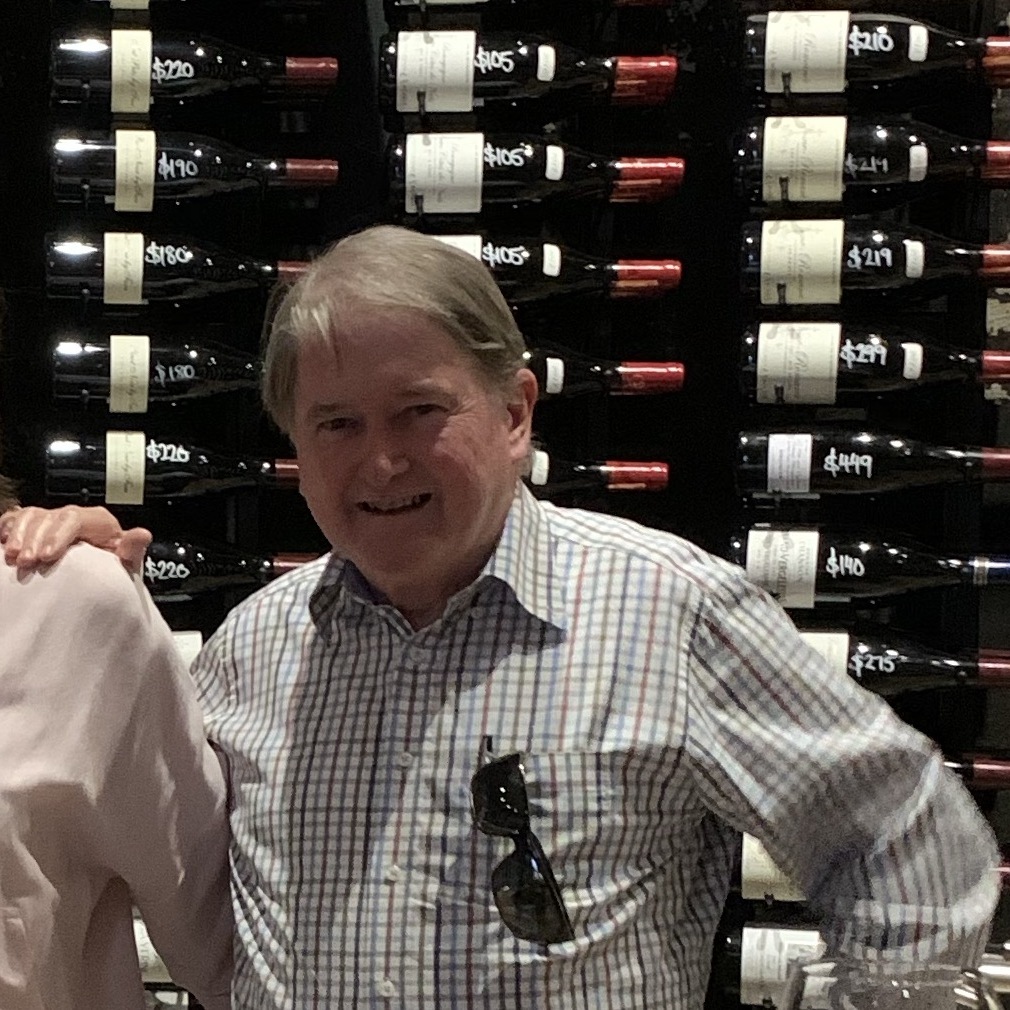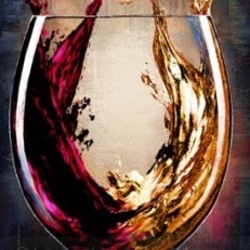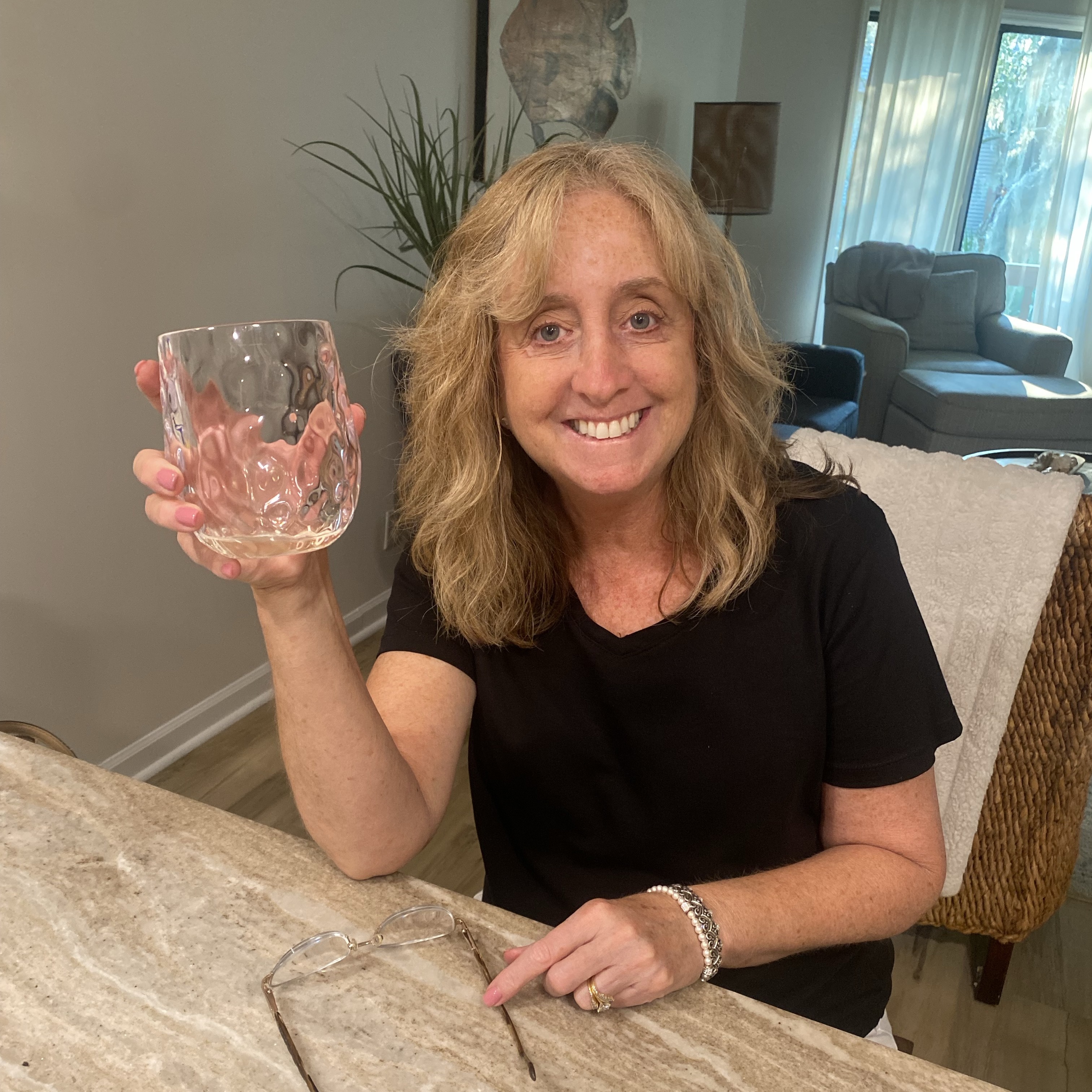Overseas
Craiglee
Sunbury Shiraz 2006
Craiglee have been making wine on this site since the 1860s In a 3 Level bluestone gravity fed winery - about a half hours drive north of Tullamarine - Melbourne International Airport. Aromas of Liquorice and Spice. Medium minus palate weight - very different to Barossa or McLaren Vale Shiraz. Medium To light weight tannins. Great length despite the lack of palate weight - like a Pinot lovers Shiraz. Years ago I used to buy this cool climate Victorian Shiraz because of the white and black pepper, but no sign of that in this one - is Pat Carmody picking a little riper? Worth a visit for any visiting overseas Wine Lover so close to Tullamarine. — 7 years ago
Radford Dale
Chardonnay 2010
Simply one of The Best overseas chardonnay's i have ever tastet.
Lot's of citrus notes and in very good shape!!
Brilliant vine!! — 9 years ago
Marie et Vincent Tricot
Petit Rouge de la Cote Ouest Gamay
I really need to live NOT overseas from Europe. This just has a completely different everything about it here. — 10 years ago
Peter Lehmann
Stonewell Barossa Shiraz 2006
i'm most certainly not here to advise winemakers or bring their style up to speed.
but i can say imho overseas, especially many australian and californian winemakers produce much more elegant and harmonic liquids these days than let's say 10 years earlier, to leave supermarkt items out in the cold.
this specific wine is an example of barossa terroir, of syrah AND of ripe but cool fruit (predominantly cassis) - not jammy at all. full of spices but not too loud, herbs, fascinating mouthfeel.
well done! — 10 years ago
Vigne e Vini Varvaglione
Primitivo del Salento 2012
Raspberry and blackberry nose with slight rose petal notes. Pomegranate red colour. Medium body with well balanced red and black berry fruit sweetness and acidity (medium plus). Mouthwatering juicy and tangy mouthfeel. On the palate is a ripe red raspberry and blackberry platter with features of ripe cherries and a medium minus feature of french oak foundation. Well structured acidity and fruit with medium minus presence of tannins. Personable of low sweetness strawberry purée from a weathered cedar plank goblet. This is an excellent Italian competitor of a Paso Robles Californian Zinfandel with shared DNA structure ( overseas family). Enjoy with pulled pork nachos or chipotle chicken with smoked cheddar pizza. — 11 years ago
Jessup Cellars
Estate Grown Manny's Blend Napa Valley Red Blend 2014
We were able to buy 6 x bottles of 2014 Manny’s Blend and bring them overseas w/ us. Truly one of the most multifaceted wines I’ve had: great alone, w/ steak, w/ chocolate....it’s sick. Just perfection. — 7 years ago
Pooley
Pinot Noir 2017
Toffee caramel notes showing the oak influence along with bright red cherries and other red fruits. On the palate a nice savoury earthiness - very Tassie. From the Coal River and only 5 klms from the high profile Tolpuddle Vineyard. Tasted again 9 weeks later on 19th February with consistent notes. Aromatic Bright and Fresh. A lot of these Tasmanian producers are boutique small operations who do not distribute overseas and can sell the lot in Australia. — 7 years ago
Kosta Browne
Estate Pinot Noir 2013
Happy birthday to me! Well, to Mrs Feyereisen as well. Celebrating tonight before heading overseas for 10 days and what a bottle this was. Kosta Browne is always special but this may have been my favorite - cola and cherry notes ride along a finish that sails on for at least a minute. Lucky to have snagged a handful of these last summer. Cheers all! — 8 years ago
Yalumba
D Black Cuvée Sparkling Cabernet Sauvignon Shiraz 2004
Sparkling Shiraz is an Australian specialty that does not seem to have caught on overseas. Like an excellent aged Cab/Shiraz with a mild bubble. Blackcurrant spice and chocolate on nose and palate. Love this style. Drank my last bottle of Yalumba D on 8th Nov 2016. Notes as above with more complexity giving a score of 96 points. The perfect accompaniment to turkey legs. — 9 years ago


Bodegas Baigorri
Maceración Carbónica Rioja Tempranillo 2014
So this is the stuff they don't send overseas - very bright, fruit forward, fun wine. It was only 18 euros, we bought a bunch to drink along the way! — 10 years ago
Pol Roger
Réserve Brut Champagne Blend
I received not 1 but 2 of these lovely little bottles as part of my $150 per month PCC subscription this month.
A mesmerising white gold on the eye. Smells of delicious happiness with side notes of pineapple and grapefruit. On the palate it brings back memories of 20 year old me drinking this with my workmates at Glengarry prior to heading overseas. Not a bad tipple at your leaving party hey. Flavours of lemon curd on scones with a powerful yet royally elegant mousse (mouthfeel). This is the Champas which showed me there's more to French Champagne than Moët and Veuve and I have to admit it hauntingly really did evoke memories from when I tried it 10 years ago, if my taste buds are on the ball then that just goes to show how consistent Pol Roger NV is! — 10 years ago
Fursh Von Metternichscher
Schloss Johannisberger Beerenauslese Riesling 1971
I am not very fond of sweet wines but this wine was incredible (wine of the night)! Screaming acidity from a great producer and vintage... I enjoyed this with the man who bottled this in 1972... He worked here for a year and made $1.62 per hour during a time when working overseas was rare. This was the only bottle he brought back... Young fresh and vibrant! — 11 years ago
The Standish Wine Company
Single Vineyard Shiraz 2015
A new entry into the Excellent category and one of the hot newer Barossa wineries. Getting some rave reviews in the overseas press. Langtons tasting in September 2018. — 7 years ago

hunting list. Thx again & cheers 🍇🍷

Krug
Brut Rosé Champagne Blend
There are certain occasions that call for Krug Rosé. So, HBTM! The bottle was corked in the summer of 2014. It’s a blend of 45 reserve wines with the oldest being from 2007 and the youngest 2002. This is why I think Champagne Makers are some of the most talented people making wine. They are constantly blending up to 100 plus wines to bring that bottle to bottle and year to year branded flavor of consistency. On the nose; red & pink spring flowers, cherries, strawberries, watermelon, black cherry, black raspberries, notes of blood orange citrus, baked bread, soft volcanic mineral and elegant chalkiness. The palate is always ridiculously delicate. Micro bubbles, silky rich texture with beautiful soft acidity. The palate fruits are similar to the nose; rich & ripe cherries, strawberries watermelon, black cherry, black raspberries, notes of blood orange citrus with hints of marmalade. Red & pink spring flowers, baguette crust, soft powdery minerals that give the palate a slight sting and super powdery chalkiness done just right. The finish is beautifully rich, textured, revealing itself in layers and lasts minutes. Photos of; Founder Joseph Krug, House of Krug, Winemaker Eric Lebel, Krug’s Clos du Mesnil, a small plot of 1.85 hectares of Chardonnay...one of the world’s greatest vineyards and their salon tasting room. Producer history & notes...Krug was founded by Joseph Krug in 1853. They are based in Reims, the main city in France’s Champagne region. It is one of the famous Champagne houses that formed part of the Grande Marques. Today the house is majority owned by the multinational conglomerate LVMH, which owns Moët Hennessy, Louis Vuitton S.A. and who’s wine producer portfolio includes other well known wine brands such as; Moët & Chandon, Veuve Clicquot, Château d'Yquem, Ruinart & Cheval Blanc, Dom Perignon and many others. Despite LVMH's majority ownership, the family is still actively involved in all the key decisions of the house but does not manage the day-to-day operations. Joseph Krug was born Johann-Joseph Krug, a butcher’s son, in Mainz, on the Rhine in 1800 when the city was part of the Napoleonic Empire. Having dispensed with the name Johann, he left Mainz in 1824 and in 1834 moved on to Paris. Germans were in demand in France as accountants and bookkeepers. So, Joseph joined Champagne Jacquesson in Châlons-sur-Marne. He spent eight years with Jacquesson. His work took him beyond accountancy. He went around Europe testing the market and assessing criticism from wine sellers and customers. He learned about composition and taste so that by 1840 he already seemed to have been blending Champagne for at least one other house. In 1841, he married Emma-Anne Jaunay. The daughter of a French hotelier based in London’s Leicester Square. The following year their son Paul Krug was born. In 1842 he moved to Reims and following a year later, Krug et Cie was founded with his partner, Hyppolite de Vivès. Joseph was fluent in French, English and German and even spoke some Russian, putting the company in position to exploit key overseas markets. Joseph died in 1866 and was succeeded by his son Paul Krug, who had been trained by his father to takeover. Joseph under the supervision of Paul, Krug was established as a Grande Marque. By the 1880s the prestige of Krug was acknowledged in the United Kingdom and became the primary overseas market for Champagne. In 1866, the House moved into Rue Coquebert, in Reims as it remains. After Paul’s death in 1910, he was succeeded by his son, Joseph Krug II. However, during World War I Joseph II was taken prisoner and his wife Jeanne played a key role in the House at a time when the Western Front divided the region between the Allies and the Germans. After the war, Joseph II’s slow recovery led to his nephew Jean Seydoux becoming joint manager in 1924. In that decade, the Krug 1926 and 1928 vintages were created, which have been considered by critics to be amongst the greatest Champagnes. Lawyer and wine writer Maurice Healey declared “Krug” the king of all Champagnes. Further, “that the 1928 Krug was the best wine made in the present century.” By the mid-1930s, Paul Krug II, the son of Joseph II, was active in the business and would become head of the House from 1959 to 1977. His father died in 1967, by which time he was, according to Patrick Forbes, “one of the most popular and respected figures in the Champagne district.” In 1962 Henri Krug, the son of Paul II, joined the management, as did his brother Remi three years later. Their arrival was followed by a series of innovations, including extensions in the range of Champagnes. In 1979, for the first time, a graduate winemaker joined the House. In January 1999, the House became part of LVMH and by 2007, the brothers, while remaining on the tasting committee, had stepped down from day-to-day responsibilities. In 2009 Olivier Krug, the son of Henri, became House Director. At harvest, Krug grapes are pressed close to their plots with the first juice kept for 24 hours in a vat prepared for the fermentation stage. The pressing from each plot is vinified separately. A pressing contains 4,000 kilos of grapes and yields 20.5 hectolitres of first juice (cuvée), which is poured into twelve oak casks chosen at random. Once fermentation is complete, the eleventh and twelfth casks are used to top up the other ten casks in order to protect the new wines from oxidation. For fifteen days, each cask is topped up with wine from the same plot. Krug uses small 205 liter oak casks tailor-made from trees that are more than two centuries old in the forests of Hautes Futaies in Central France. The average age of Krug oak casks is 20 years. They are retired after approximately 40 years of use. The wines remain in the casks for several weeks. During this period, clarification occurs naturally from the cool temperature of the cellar given the coming winter, as does a micro-oxygenation process from the use of natural containers, making the wine more resistant to oxygen over time. Finally, between December and January, the wine is drawn off into small stainless-steel vats. From here, depending on the decisions of Krug’s tasting committee, the wines will either contribute to that year’s assemblage or be stored in steel vats in the House’s library of 150 reserve wines to be used in the blend of a future Krug Grande Cuvée and or Krug Rosé. — 8 years ago
















Connor Smith

The 17th century saw an explosion of beverage options in Europe. Spirits were coming into their own, flavoring with hops was finally the standard for beer, and chocolate, coffee, and tea began flowing from overseas. Wine was no longer the only kid on the block, and had to offer something new to stay on top.
Sparkles in wine due to second fermentations were nothing new, but it was the leap in English glassmaking technology in the 1620s with coal-firing that allowed them to be harnessed. No longer would there be constant risk of bottles exploding from pressure, and bubbles came ever more into vogue - much to the chagrin of the great advocates of still blanc de noirs Champagne, Dom Perignon and the Marquis de Saint-Evremond. But there was no holding back the tide, and by the end of the century sparkling Champagne was the drink of choice for high courts across Europe.
(This is adapted from notes for Le Dû’s Wines ‘History of Wine 1453AD-Present’ seminar, where this wine was poured.) — 6 years ago